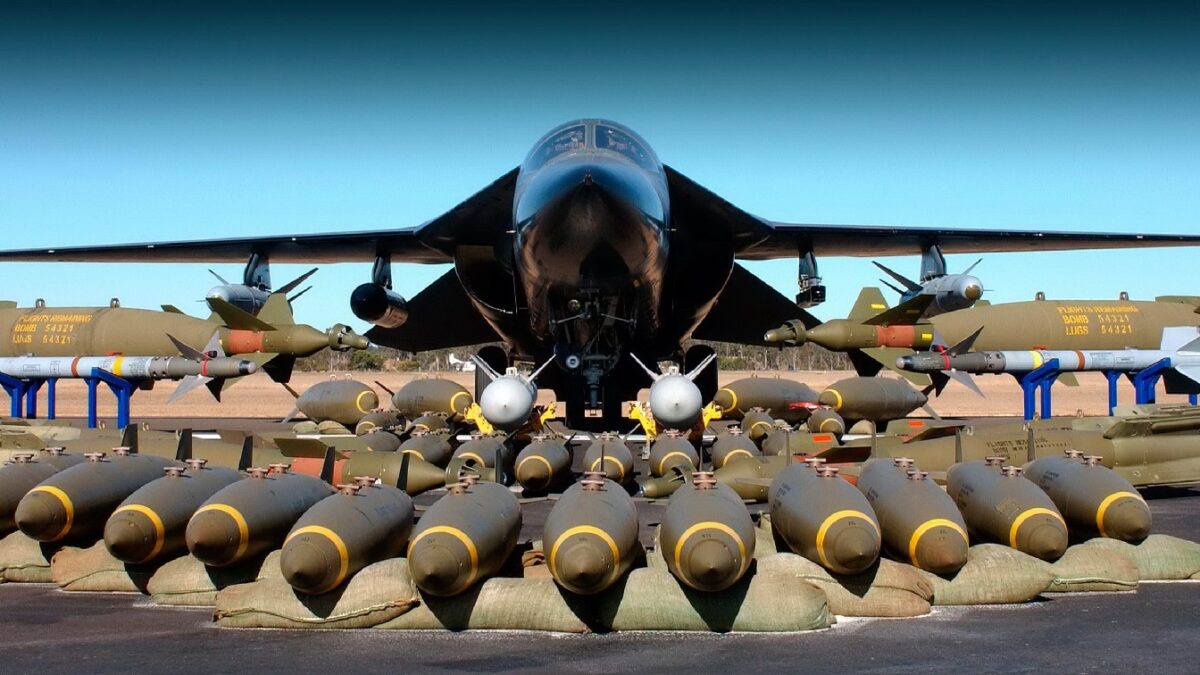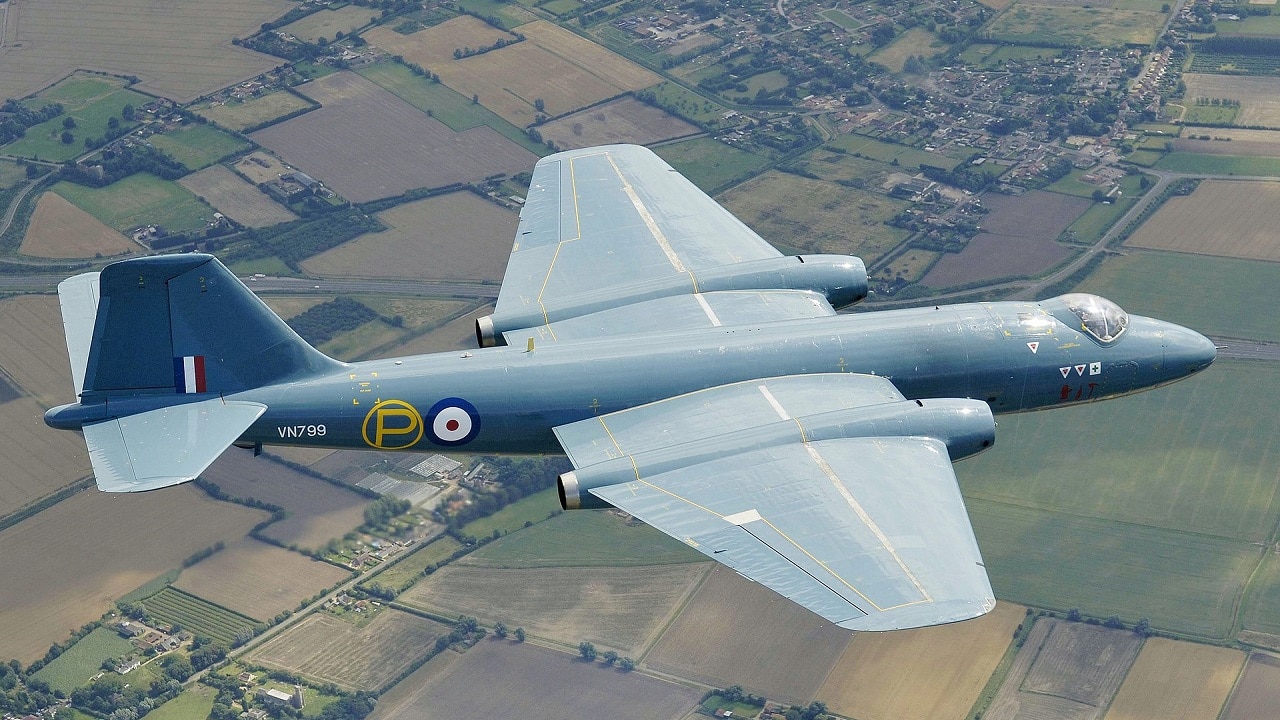Most people will associate the name Canberra with the capital city of Australia. But the name has a different significance in the history of another British Commonwealth nation – that being Great Britain herself. Say hello to the English Electric Canberra jet bomber.
English Electric Canberra: Origins and Specifications
The Canberra bomber made her maiden flight on May 13, 1949 and officially entered into service with the Royal Air Force on May 25, 1951. The manufacturer, the English Electric Company Limited, was founded in 1918 and in 1968 merged with the General Electric Corporation – not to be confused with the American G.E. corporation. This company’s defense arm eventually became BAE Systems plc.
The plane was designed as a jet-powered successor to the De Havilland Mosquito, which earned a legendary reputation during WWII for its speed and deadliness as a fighter and bomber alike. The newer aircraft didn’t disappoint. At the time of her debut, the Canberra could fly higher than any fighter plane available at the time, and faster than most.
The Aussies did play a direct role in the naming of the new-generation warbird, as explained by the HARS Aviation Museum’s official website:
“In honour of Australia being the first export customer the aircraft was officially named the ‘Canberra’ (after the Capital of Australia) by Australian Prime Minister Bob Menzies in January 1951.”
Accordingly, the city’s namesake jet began serving the Royal Australian Air Force in late 1953, with 48 of the airframes built under license at Government Aircraft Factories in Melbourne.
The Canberra was further exported to another 14 countries: Argentina, Chile, Ecuador, Ethiopia, France, India, New Zealand, Peru, Rhodesia/Zimbabwe, South Africa, Sweden, Venezuela, West Germany, and the U.S. – which ended up producing 451 of its own such planes under license as the Martin B-57 Canberra. Between the UK, Australia, and the U.S, a total of 1,376 Canberra airframes were built.
The warbird had a crew of three and was powered by twin Rolls-Royce Avon RA3 engines, which sent the plane to a max airspeed of 570 mph. Fuselage length was 65 feet 6 inches, wingspan was 63 feet 11 inches, and height was 15 feet 8 inches. Empty weight was 21,650 pounds, while the aircraft’s maximum takeoff weight was 46,000 pounds. The Canberra’s payload initially consisted of a tactical nuke such as a Red Beard freefall bomb, but this eventually changed to a 6,000-pound conventional bomb load.
By 1958 the Canberra had set a whopping 19 point-to-point speed records and three altitude records, including one of 70,310 feet in 1957.
Combat Proven
Unlike the Mosquito, the Canberra was never used as a fighter – hence its lack of defensive armament. Designed as a medium bomber for tactical nuclear-strike purposes – a role which ultimately never played out in the real world thanks to the collapse of the Soviet Union – the warbird eventually saw roles as a conventional tactical bomber and a photographic and electronic reconnaissance platform, thus lending credence to the dictum, “Flexibility is the key to airpower.”
The Canberra was first blooded in combat during the Malayan Emergency of 1948-1960, a conflict that is still considered a model of how to conduct a successful counterinsurgency campaign. Then came the Vietnam War, which saw eight Canberras with the 2 Sqn RAAF, under the U.S. Air Force 35th Tactical Fighter Wing Command, fly nearly 12,000 low-level bombing missions in Southern Vietnam’s III and IV Corps tactical zones, which included the area around the capitol city of Saigon and the Mekong Delta. Two of these planes would be lost in the course of the war.
The plane was used in several other Cold War conflicts including the Suez Crisis, the Indo-Pakistani Wars, several African flareups, and the 1982 Falklands War. Ironically, in that last conflict, British troops found themselves on the receiving end of attacks by Argentine Air Force Canberras.
Where Are They Now?
The Australians retired their capital city’s aeronautical namesake in 1982 – replacing her with the F-111 Aardvark – but incredibly, the Brits kept the plane in service until 2006. Amazingly, some are still flying today in the U.S., carrying out high-altitude mapping and research work, and another 10 or so airworthy specimens are privately owned. Surviving static displays can be found in museums across 11 different countries. Stateside examples can be found at the Valiant Air Command Warbird Museum in Titusville, Florida.

F-111. Image Credit: Creative Commons.

F-111. Image Credit: Creative Commons.
Christian D. Orr is a former Air Force Security Forces officer, Federal law enforcement officer, and private military contractor (with assignments worked in Iraq, the United Arab Emirates, Kosovo, Japan, Germany, and the Pentagon). Chris holds a B.A. in International Relations from the University of Southern California (USC) and an M.A. in Intelligence Studies (concentration in Terrorism Studies) from American Military University (AMU). He has also been published in The Daily Torch and The Journal of Intelligence and Cyber Security. Last but not least, he is a Companion of the Order of the Naval Order of the United States (NOUS). In his spare time, he enjoys shooting, dining out, cigars, Irish and British pubs, travel, USC Trojans college football, and Washington DC professional sports.

